The following article updates the diffusion index, recession slack index, aggregate recession model, and aggregate peak-trough model through January 2019. The current 21-variable model has a diverse set of explanatory variables and is quite robust. Each of the explanatory variables has predictive power individually; when combined, the group of indicators is able to identify early recession warnings from a wide range of diverse market-based, fundamental, technical, and economic sources.
Several of the explanatory variables are market-based. These variables respond very quickly to changing market conditions and are never revised. This makes the Trader Edge recession model much more responsive than other recession models. The current and historical data in this report reflect the current model configuration with all 21 variables.
Diffusion Index
The Trader Edge diffusion index equals the percentage of independent variables indicating a recession. With the latest changes, there are now a total of 21 explanatory variables, each with a unique look-back period and recession threshold. The resulting diffusion index and changes in the diffusion index are used to calculate the probit, logit, and neural network model forecasts.
The graph of the diffusion index from 1/1/2006 to 2/1/2019 is presented in Figure 1 below (in red - left axis). The gray shaded regions in Figure 1 below represent U.S. recessions as defined (after the fact) by the National Bureau of Economic Research (NBER). The value of the S&P 500 index is also included (in blue - right axis).
The U.S. economy flirted with entering a recession in early 2016, which was reflected in the deteriorating economic, fundamental, and especially market-based data. The diffusion index, slack index, and recession probability forecasts all captured the weakening conditions. However, the weakness proved to be temporary and the conditions and recession model forecasts improved rapidly. However, preliminary signs of weakness reemerged in late 2018 and conditions deteriorated rapidly in December. The number of variables indicating a recession dropped from six (28.6%) to five (23.8%) in January. Given the market rebound in January, this is not a surprise. However, while the market-related explanatory variables improved, several economic variables continued to deteriorate. This explains why the diffusion index only declined by one variable (4.8%) in January.
Please note that past estimates and index values will change whenever the historical data is revised. All current and past forecasts and index calculations are based on the latest revised data from the current data set.
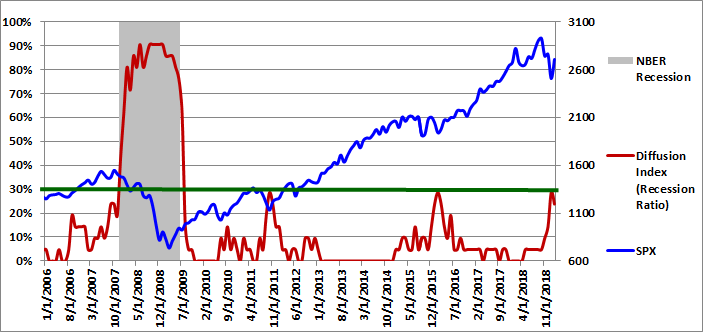
Figure 1: Diffusion Index 02-01-2019
Recession Slack Index
The Trader Edge recession slack index equals the median standardized deviation of the current value of the explanatory variables from their respective recession thresholds. The resulting value signifies the amount of slack or cushion relative to the recession threshold, expressed in terms of the number of standard deviations. Higher slack values signify larger cushions above recessionary threshold levels. While the median recession slack index is used in the recession models, I am now including the mean recession slack index in the graph as well.
The gray shaded regions in Figure 2 below represent U.S. recessions as defined (after the fact) by the NBER. The median recession slack index is depicted in purple and is plotted against the right axis, which is expressed as the number of standard deviations above the recession threshold. The mean recession slack index is depicted in blue and is also plotted against the right axis.
The dark-red, horizontal line at 0.50 standard deviations denotes a possible warning threshold for the recession slack index. Many of the past recessions began when the recession slack index crossed below 0.50. Similarly, many of the past recessions ended when the recession slack index crossed back above 0.0.
In mid-2014, the revised median recession slack index peaked at 1.35, far above the warning level of 0.50. The recession slack index declined significantly in 2015 and reached a low of 0.27 in February 2016, before rebounding over the next few months. In early 2017, the median recession index peaked at 1.45, but declined in the fall before rebounding at year-end.
In January 2018, the median recession slack index decreased alarmingly from a revised value of 0.64 to 0.37, falling below the early warning threshold of 0.50 for the first time since early 2016. The mean recession slack index declined from a revised value of 0.40 to 0.35 during the same period. Both the median and mean recession index are now below the early warning threshold.
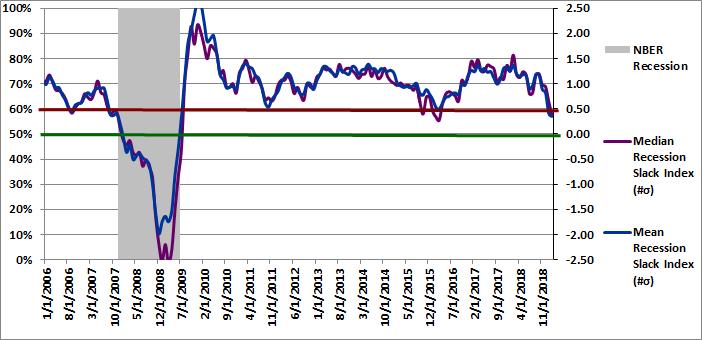
Figure 2: Recession Slack Index 02-01-2019
To gain further insight into the slack index, I recently went back and calculated a derivative value: the percentage of variables with increasing slack each month. The possible values range from zero percent to 100 percent. Due to the monthly volatility, I provide the three-month moving average of the percentage of variables with increasing slack in Figure 3, but I personally monitor the monthly percentages as well.
Slack is a standardized value, so it is directly comparable across all variables. More slack indicates a larger cushion relative to a recessionary environment. As a result, we would like to see as many variables as possible with increasing slack. Given the diverse nature of the explanatory variables, it is unusual to see more than 60% of the variables with increasing slack or fewer than 40% of the variables with increasing slack. These extreme values are significant and predictive of the near-term direction of economic growth and often the equity market.
The 3-month moving average of the percentage of variables with increasing slack increased from 23.8% last month to 39.7% in January. This is consistent with the market rebound, but is inconsistent with the continued decline in the median and mean slack indices. The moving average of variables with increasing slack is still very low. New evidence of economic weakness (or strength) often shows up first in this timely metric. The rebound in this variable is somewhat encouraging, but the continued decline in the median and mean slack indices is cause for continued concern, especially if the rebound proves to be short-lived.
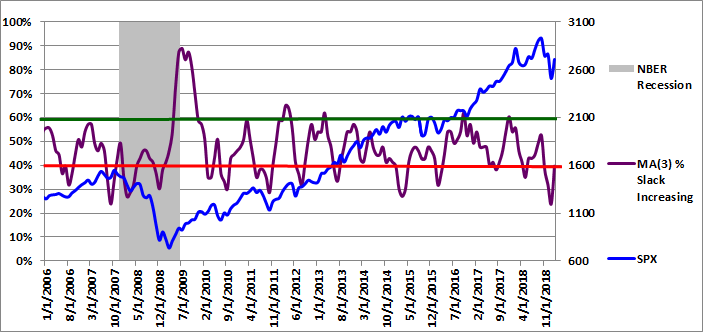
Figure 3: MA(3) % Slack Increasing 02-01-2019
The ability to track small variations and trend changes over time illustrates the advantage of monitoring the continuous recession slack index. The new slack variable will provide additional insight into the near-term direction of the economy and should be used in conjunction with the median recession slack index.
While it is useful to track the actual recession slack index values and percentage of variables with increasing slack, the diffusion percentages and slack index values are also used to generate the more intuitive probit and logit probability forecasts.
Aggregate Recession Probability Estimate
The Trader Edge aggregate recession model is the average of four models: the probit and logit models based on the diffusion index and the probit and logit models based on the recession slack index. The aggregate recession model estimates from 1/1/2006 to 2/01/2019 are depicted in Figure 4 below (red line - left vertical axis). The gray shaded regions represent NBER recessions and the blue line reflects the value of the S&P 500 index (right vertical axis). I suggest using a warning threshold of between 20-30% for the aggregate recession model (green horizontal line).
The aggregate recession model probability estimate increased from a revised value of 8.9% in December to 9.1% in January. According to the model, the probability that the U.S. is currently in a recession has increased to almost 10%. However, if the markets do not maintain their recent gains, this probability will continue to increase.
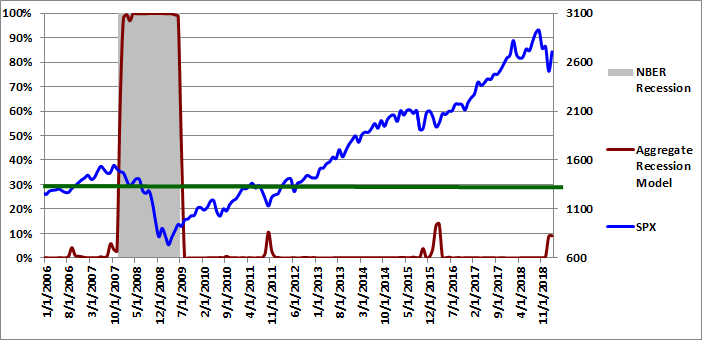
Figure 4: Aggregate Recession Model 02-01-2019
Aggregate Peak-Trough Probability Estimate
The peak-trough model forecasts are different from the recession model and are much more responsive. The peak-trough models estimate the probability of the S&P 500 being between the peak and trough associated with an NBER recession. The S&P 500 typically peaks before recessions begin and bottoms out before recessions end. As a result, it is far more difficult for the peak-trough model to fit this data and the model forecasts have larger errors than the recession model.
The Trader Edge aggregate peak-trough model equals the weighted-average of nine different models: the probit and logit models based on the diffusion index, the probit and logit models based on the recession slack index, and five neural network models.
The aggregate peak-trough model estimates from 1/1/2006 to 02/01/2019 are depicted in Figure 5 below, which uses the same format as Figure 4, except that the shaded regions represent the periods between the peaks and troughs associated with NBER recessions.
The aggregate peak-trough model probability estimate for 2/01/2019 was 40.2%, which increased even further from last months revised value of 34.9%. The current value of 40.2% is the highest peak-trough probability since 4/1/2009.
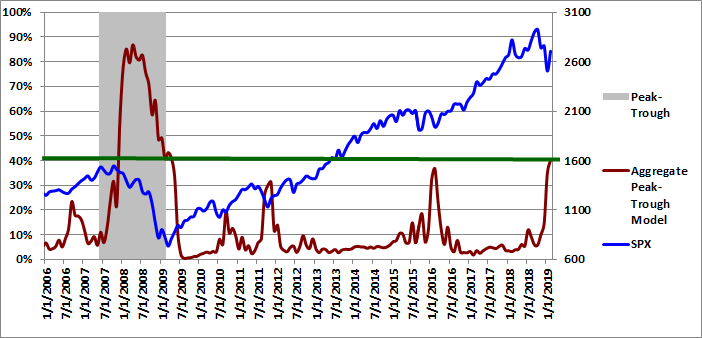
Figure 5: Aggregate Peak-Trough Model 02-01-2019
Conclusion
January and February 2016 marked a potential tipping point in U.S. recession risk, but those conditions proved to be temporary. Conditions improved significantly since early 2016, but have recently deteriorated dramatically. We are now facing another tipping point.
U.S. recession risk continued to increase in January, even with a significant market rebound. The diffusion index declined from from six variables (28.6%) to five variables (23.8%) in January. Despite the decline in the diffusion index, both of the recession slack indices continued their decline and both are now below the early warning threshold for the first time since 2009. The moving average of explanatory variables with increasing slack did increase in January, primarily due to the market-related variables. The aggregate recession probability is now almost 10%, and the peak-trough probability (40.2%) is the highest it has been since the Great Recession.
However, it is possible that a few of the economic variables were affected this month by the Government shut-down. If that was the case, the model readings in the next month or two will be more representative of the true economic environment.
The equity markets rebounded in January, which adds additional price risk to the market on a near term basis. This is particularly troubling when economic conditions continue to worsen. We have reached another inflection point. The next few months will be very telling. Stay tuned...
Finally, Hulbert's recent MarketWatch article cited research that used the household equity allocation percentage as a tool for forecasting long-term (10-year) future equity returns. The resulting correlation was so strong (-0.90) that I was compelled to duplicate the research and verify the results myself. I did so and the correlation is correct. It is highly unusual to ever see correlations that high in actual market data. Furthermore, a strong argument can be made for a causal link due to the direct effects of both market valuation and behavioral finance on the household equity allocation percentage.
Based on the most recent data, the regression model indicates that the expected annual price return of the S&P 500 index for the next 10 years has dropped below zero again (-0.11%), with an expected drawdown in that period of 35% (from 2/1/2019 levels). These values worsened again due to the market rebound. Expected price returns are exceptionally low in a historical context, especially given the near-term market, economic, and geopolitical risks.
I completed a similar historical regression analysis using the "Buffett Indicator", which is the ratio of equity market capitalization to GDP. The correlation is not quite as strong, but is still very significant (-0.74). The Buffett Indicator regression model currently indicates that the expected annual price return of the S&P 500 index for the next 10 years is still negative (-4.3%), with an expected drawdown in that 10-year period of over 50% (-53%) (from 2/1/2019 levels).
Overvalued securities can always become more overvalued - especially in the near-term. That said, history offers compelling evidence that bullish equity positions today will face significant headwinds over the coming years. In addition, it is especially troubling that almost all domestic and international equity markets have suffered dramatic drawdowns in the past 12 months, some as large as 25% to 30%.
Unlike human prognosticators, the Trader Edge recession model is completely objective and has no ego. It is not burdened by the emotional need to defend past erroneous forecasts and will always consistently apply the insights gained from new data.
Brian Johnson
Copyright 2018 Trading Insights, LLC. All rights reserved.
Option Strategy Risk Management: An In-Depth Article Introducing an Interactive Analytical Framework for Hedging Option Strategy Risk
Option Income Strategy Trade Filters: An In-Depth Article Demonstrating the Use of Trade Filters to Enhance Returns and Reduce Risk
Exploiting Earnings Volatility: An Innovative New Approach to Evaluating, Optimizing, and Trading Option Strategies to Profit from Earnings Announcements.
Option Strategy Risk / Return Ratios: A Revolutionary New Approach to Optimizing, Adjusting, and Trading Any Option Income Strategy












Recession Model Forecast: 02-01-2019
The following article updates the diffusion index, recession slack index, aggregate recession model, and aggregate peak-trough model through January 2019. The current 21-variable model has a diverse set of explanatory variables and is quite robust. Each of the explanatory variables has predictive power individually; when combined, the group of indicators is able to identify early recession warnings from a wide range of diverse market-based, fundamental, technical, and economic sources.
Several of the explanatory variables are market-based. These variables respond very quickly to changing market conditions and are never revised. This makes the Trader Edge recession model much more responsive than other recession models. The current and historical data in this report reflect the current model configuration with all 21 variables.
Diffusion Index
The Trader Edge diffusion index equals the percentage of independent variables indicating a recession. With the latest changes, there are now a total of 21 explanatory variables, each with a unique look-back period and recession threshold. The resulting diffusion index and changes in the diffusion index are used to calculate the probit, logit, and neural network model forecasts.
The graph of the diffusion index from 1/1/2006 to 2/1/2019 is presented in Figure 1 below (in red - left axis). The gray shaded regions in Figure 1 below represent U.S. recessions as defined (after the fact) by the National Bureau of Economic Research (NBER). The value of the S&P 500 index is also included (in blue - right axis).
The U.S. economy flirted with entering a recession in early 2016, which was reflected in the deteriorating economic, fundamental, and especially market-based data. The diffusion index, slack index, and recession probability forecasts all captured the weakening conditions. However, the weakness proved to be temporary and the conditions and recession model forecasts improved rapidly. However, preliminary signs of weakness reemerged in late 2018 and conditions deteriorated rapidly in December. The number of variables indicating a recession dropped from six (28.6%) to five (23.8%) in January. Given the market rebound in January, this is not a surprise. However, while the market-related explanatory variables improved, several economic variables continued to deteriorate. This explains why the diffusion index only declined by one variable (4.8%) in January.
Please note that past estimates and index values will change whenever the historical data is revised. All current and past forecasts and index calculations are based on the latest revised data from the current data set.
Figure 1: Diffusion Index 02-01-2019
Recession Slack Index
The Trader Edge recession slack index equals the median standardized deviation of the current value of the explanatory variables from their respective recession thresholds. The resulting value signifies the amount of slack or cushion relative to the recession threshold, expressed in terms of the number of standard deviations. Higher slack values signify larger cushions above recessionary threshold levels. While the median recession slack index is used in the recession models, I am now including the mean recession slack index in the graph as well.
The gray shaded regions in Figure 2 below represent U.S. recessions as defined (after the fact) by the NBER. The median recession slack index is depicted in purple and is plotted against the right axis, which is expressed as the number of standard deviations above the recession threshold. The mean recession slack index is depicted in blue and is also plotted against the right axis.
The dark-red, horizontal line at 0.50 standard deviations denotes a possible warning threshold for the recession slack index. Many of the past recessions began when the recession slack index crossed below 0.50. Similarly, many of the past recessions ended when the recession slack index crossed back above 0.0.
In mid-2014, the revised median recession slack index peaked at 1.35, far above the warning level of 0.50. The recession slack index declined significantly in 2015 and reached a low of 0.27 in February 2016, before rebounding over the next few months. In early 2017, the median recession index peaked at 1.45, but declined in the fall before rebounding at year-end.
In January 2018, the median recession slack index decreased alarmingly from a revised value of 0.64 to 0.37, falling below the early warning threshold of 0.50 for the first time since early 2016. The mean recession slack index declined from a revised value of 0.40 to 0.35 during the same period. Both the median and mean recession index are now below the early warning threshold.
Figure 2: Recession Slack Index 02-01-2019
To gain further insight into the slack index, I recently went back and calculated a derivative value: the percentage of variables with increasing slack each month. The possible values range from zero percent to 100 percent. Due to the monthly volatility, I provide the three-month moving average of the percentage of variables with increasing slack in Figure 3, but I personally monitor the monthly percentages as well.
Slack is a standardized value, so it is directly comparable across all variables. More slack indicates a larger cushion relative to a recessionary environment. As a result, we would like to see as many variables as possible with increasing slack. Given the diverse nature of the explanatory variables, it is unusual to see more than 60% of the variables with increasing slack or fewer than 40% of the variables with increasing slack. These extreme values are significant and predictive of the near-term direction of economic growth and often the equity market.
The 3-month moving average of the percentage of variables with increasing slack increased from 23.8% last month to 39.7% in January. This is consistent with the market rebound, but is inconsistent with the continued decline in the median and mean slack indices. The moving average of variables with increasing slack is still very low. New evidence of economic weakness (or strength) often shows up first in this timely metric. The rebound in this variable is somewhat encouraging, but the continued decline in the median and mean slack indices is cause for continued concern, especially if the rebound proves to be short-lived.
Figure 3: MA(3) % Slack Increasing 02-01-2019
The ability to track small variations and trend changes over time illustrates the advantage of monitoring the continuous recession slack index. The new slack variable will provide additional insight into the near-term direction of the economy and should be used in conjunction with the median recession slack index.
While it is useful to track the actual recession slack index values and percentage of variables with increasing slack, the diffusion percentages and slack index values are also used to generate the more intuitive probit and logit probability forecasts.
Aggregate Recession Probability Estimate
The Trader Edge aggregate recession model is the average of four models: the probit and logit models based on the diffusion index and the probit and logit models based on the recession slack index. The aggregate recession model estimates from 1/1/2006 to 2/01/2019 are depicted in Figure 4 below (red line - left vertical axis). The gray shaded regions represent NBER recessions and the blue line reflects the value of the S&P 500 index (right vertical axis). I suggest using a warning threshold of between 20-30% for the aggregate recession model (green horizontal line).
The aggregate recession model probability estimate increased from a revised value of 8.9% in December to 9.1% in January. According to the model, the probability that the U.S. is currently in a recession has increased to almost 10%. However, if the markets do not maintain their recent gains, this probability will continue to increase.
Figure 4: Aggregate Recession Model 02-01-2019
Aggregate Peak-Trough Probability Estimate
The peak-trough model forecasts are different from the recession model and are much more responsive. The peak-trough models estimate the probability of the S&P 500 being between the peak and trough associated with an NBER recession. The S&P 500 typically peaks before recessions begin and bottoms out before recessions end. As a result, it is far more difficult for the peak-trough model to fit this data and the model forecasts have larger errors than the recession model.
The Trader Edge aggregate peak-trough model equals the weighted-average of nine different models: the probit and logit models based on the diffusion index, the probit and logit models based on the recession slack index, and five neural network models.
The aggregate peak-trough model estimates from 1/1/2006 to 02/01/2019 are depicted in Figure 5 below, which uses the same format as Figure 4, except that the shaded regions represent the periods between the peaks and troughs associated with NBER recessions.
The aggregate peak-trough model probability estimate for 2/01/2019 was 40.2%, which increased even further from last months revised value of 34.9%. The current value of 40.2% is the highest peak-trough probability since 4/1/2009.
Figure 5: Aggregate Peak-Trough Model 02-01-2019
Conclusion
January and February 2016 marked a potential tipping point in U.S. recession risk, but those conditions proved to be temporary. Conditions improved significantly since early 2016, but have recently deteriorated dramatically. We are now facing another tipping point.
U.S. recession risk continued to increase in January, even with a significant market rebound. The diffusion index declined from from six variables (28.6%) to five variables (23.8%) in January. Despite the decline in the diffusion index, both of the recession slack indices continued their decline and both are now below the early warning threshold for the first time since 2009. The moving average of explanatory variables with increasing slack did increase in January, primarily due to the market-related variables. The aggregate recession probability is now almost 10%, and the peak-trough probability (40.2%) is the highest it has been since the Great Recession.
However, it is possible that a few of the economic variables were affected this month by the Government shut-down. If that was the case, the model readings in the next month or two will be more representative of the true economic environment.
The equity markets rebounded in January, which adds additional price risk to the market on a near term basis. This is particularly troubling when economic conditions continue to worsen. We have reached another inflection point. The next few months will be very telling. Stay tuned...
Finally, Hulbert's recent MarketWatch article cited research that used the household equity allocation percentage as a tool for forecasting long-term (10-year) future equity returns. The resulting correlation was so strong (-0.90) that I was compelled to duplicate the research and verify the results myself. I did so and the correlation is correct. It is highly unusual to ever see correlations that high in actual market data. Furthermore, a strong argument can be made for a causal link due to the direct effects of both market valuation and behavioral finance on the household equity allocation percentage.
Based on the most recent data, the regression model indicates that the expected annual price return of the S&P 500 index for the next 10 years has dropped below zero again (-0.11%), with an expected drawdown in that period of 35% (from 2/1/2019 levels). These values worsened again due to the market rebound. Expected price returns are exceptionally low in a historical context, especially given the near-term market, economic, and geopolitical risks.
I completed a similar historical regression analysis using the "Buffett Indicator", which is the ratio of equity market capitalization to GDP. The correlation is not quite as strong, but is still very significant (-0.74). The Buffett Indicator regression model currently indicates that the expected annual price return of the S&P 500 index for the next 10 years is still negative (-4.3%), with an expected drawdown in that 10-year period of over 50% (-53%) (from 2/1/2019 levels).
Overvalued securities can always become more overvalued - especially in the near-term. That said, history offers compelling evidence that bullish equity positions today will face significant headwinds over the coming years. In addition, it is especially troubling that almost all domestic and international equity markets have suffered dramatic drawdowns in the past 12 months, some as large as 25% to 30%.
Unlike human prognosticators, the Trader Edge recession model is completely objective and has no ego. It is not burdened by the emotional need to defend past erroneous forecasts and will always consistently apply the insights gained from new data.
Brian Johnson
Copyright 2018 Trading Insights, LLC. All rights reserved.
Option Strategy Risk Management: An In-Depth Article Introducing an Interactive Analytical Framework for Hedging Option Strategy Risk
Option Income Strategy Trade Filters: An In-Depth Article Demonstrating the Use of Trade Filters to Enhance Returns and Reduce Risk
Exploiting Earnings Volatility: An Innovative New Approach to Evaluating, Optimizing, and Trading Option Strategies to Profit from Earnings Announcements.
Option Strategy Risk / Return Ratios: A Revolutionary New Approach to Optimizing, Adjusting, and Trading Any Option Income Strategy
About Brian Johnson
I have been an investment professional for over 30 years. I worked as a fixed income portfolio manager, personally managing over $13 billion in assets for institutional clients. I was also the President of a financial consulting and software development firm, developing artificial intelligence based forecasting and risk management systems for institutional investment managers. I am now a full-time proprietary trader in options, futures, stocks, and ETFs using both algorithmic and discretionary trading strategies. In addition to my professional investment experience, I designed and taught courses in financial derivatives for both MBA and undergraduate business programs on a part-time basis for a number of years. I have also written four books on options and derivative strategies.